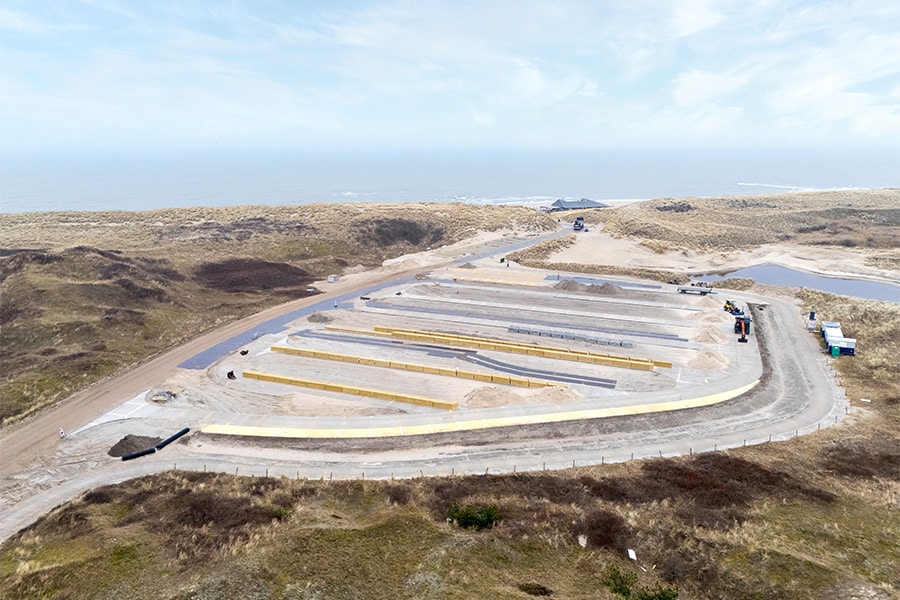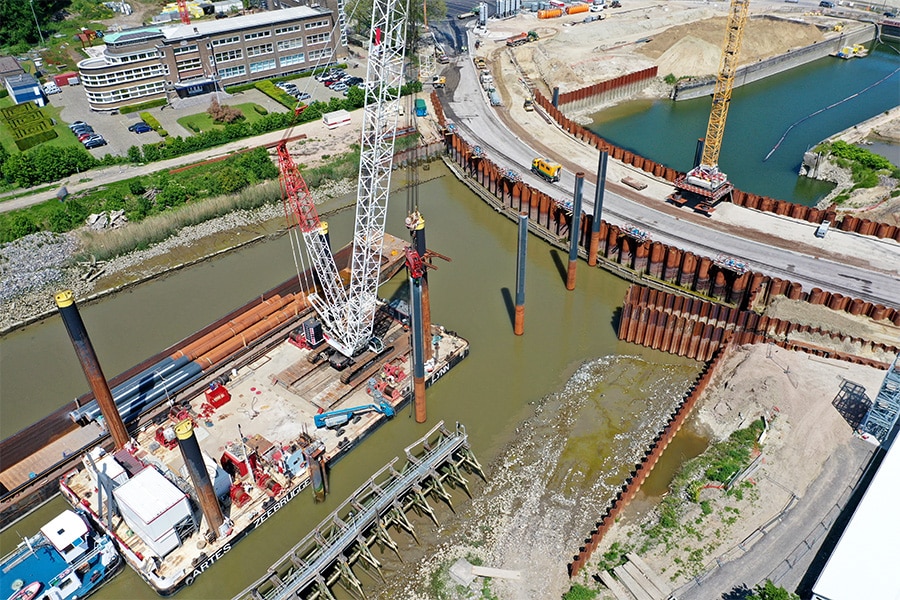
Complex technical task requires unique partnership
After the final decision was made in 2003 not to reclaim the Markermeer, the Markermeer dikes became a primary flood barrier. A flood barrier that protects 1.2 million North Hollanders and some 25 billion euros in economic value from high water.
During a periodic safety inspection in 2006, most of the dike between Hoorn and Amsterdam was rejected. From that moment on, studies have been in full swing on how the dike reinforcement should be realized technically and what it should look like. After all, the Markermeer dikes not only have a water retaining function but also a monumental status at the same time. In short, a special project that requires a unique way of working together.
The dike reinforcement task involves a stretch of some 33 kilometers and is being carried out by Alliantie Markermeerdijken, a public-private partnership between Hoogheemraadschap Hollands Noorderkwartier, Boskalis and VolkerWessels enterprises. "It is a rather unique partnership, in which the high water board is a partner in the Alliance in addition to being a client," begins Reijer Baas, Alliance Manager at Markermeerdijken. "The choice for this has everything to do with the complexity of the (technical) task. The high water board has also chosen to involve the business community in the project at an early stage so that that knowledge, expertise and experience can be used in the planning process. After all, this dike reinforcement task is quite innovative for hydraulic engineering and requires innovative techniques and the smart organization of implementation work."

Peatlands
Strengthening the Markermeer dikes requires a customized approach. "The historical qualities of the existing dike must be taken into account. Also, the situation is specific everywhere, such as a village against or even on the dike, a nature reserve or foreland that is crossed and so on. In addition, the Markermeer dikes are largely located in a peat area with a very weak subsoil. The 33-kilometer stretch was therefore divided into sixteen modules, with each module working out its own reinforcement method," Baas explains. "This involved extensive research into reinforcing dikes on peat. A calculation method was developed from this research, which was applied for the first time to the Markermeer dikes. To verify the method, we constructed trial embankments on which extensive measurements were taken to determine the strength development and settlements over time. We are now monitoring the embankments and can thus demonstrate compliance with the strength development. For quality purposes, a limited number of trial piles may then be required afterwards."
98% from the water
Because of the poor foundation, the dikes are built in layers. "That way we can achieve a lot of strength even on peat," Baas knows. "That the subsoil is so sensitive, we noticed when constructing the unloading embankments. At the beginning of the project, an embankment collapsed, even though it was all calculated beforehand. That taught us to be even more careful when creating the embankments. The sand is therefore pumped up from the water in relatively thin layers. Most of the work is being done from the work site on the water side of the dike. Some 98% of all supply and removal of materials and equipment takes place via water, particularly to spare the vulnerable hinterland. To this end, landing sites, so-called unloading embankments, have been constructed and even made several channels in the Markermeer to allow large equipment to reach the dike at all."

Co-op opportunities
So each of the 16 subsections has its own approach. "Sometimes a mix of methods is also used," continues Baas. "In a few places, the existing, monumental dike is even spared altogether. In Hoorn, for example, we chose to create a shore dike in front of the existing dike, which captures the heavy wave action. Here we are also realizing a co-opportunity for the municipality of Hoorn. This is because the municipality is investing in the construction of a city beach and catering and recreational facilities on part of this new dike. There will be bridges between the existing and the new dike and even parking spaces on the embankment. Residents have been allowed to contribute their own ideas on how to fill it in. In any case, much attention was paid in the preliminary phase to informing local residents along the entire 33-kilometer route. This varied from participation evenings to kitchen table discussions. Now during construction there are construction sounding board groups in which local residents can contribute ideas about phasing, closures, etc. These are useful meetings. They are useful meetings. Residents are the ears and eyes of the neighborhood."

Enthusiastic about collaboration
The Alliance is working to a tight schedule to deliver the Markermeer dikes "Dike Safe" by 2027. "The reinforcement operation is financed by the High Water Protection Program, a partnership between the Union of Water Boards and Rijkswaterstaat. The latter means that the progress of this project is also reported to the House of Representatives," says Baas. "Outside, we are still on schedule despite setbacks. We are constantly experiencing the power of this unique way of working together. Knowledge and expertise from the market combined with knowledge of management and maintenance, decision-making, and laws and regulations enables us to realize this complex task. In addition to creating a good working process, this also enables us to anticipate and respond to changes and setbacks, and to achieve additional (social) benefits.
reduce costs as much as possible. All alliance partners are therefore very enthusiastic about this cooperation. Other places in our country are already following this example."



